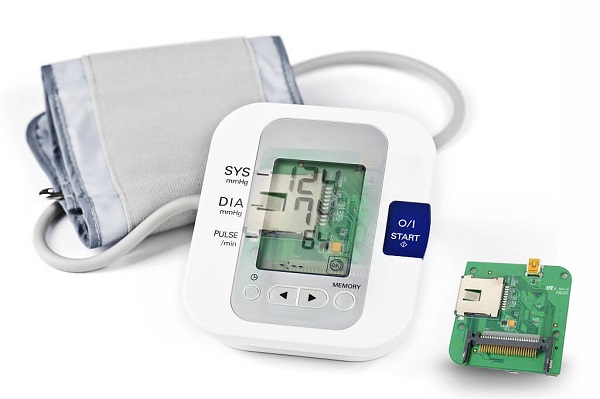
In the ever-evolving landscape of healthcare technology, precision and innovation are the cornerstones of progress. Behind the scenes, medical PCB manufacturers play a pivotal role in bringing life-saving medical devices and diagnostic equipment to the forefront of modern medicine. These unsung heroes of healthcare are the architects of circuitry that powers everything from advanced imaging machines to vital monitoring devices. But in this dynamic field, choosing the right medical PCB manufacturer isn’t just a matter of chance; it’s a strategic decision that can impact the quality of patient care, the accuracy of diagnostics, and the pace of medical breakthroughs. Let’s embark on a journey to explore the realm where technology meets healthcare, where choices are made, and where the future of medical innovation begins.

Bridging Technology and Healthcare: The Intersection of Innovation
In the realm where technology and healthcare converge, medical PCBs serve as the vital bridge. These intricate circuit boards are the unsung heroes powering a wide array of medical devices, from the diagnostic tools that unveil hidden ailments to the life-sustaining equipment that monitors patients in critical condition. They form the backbone of modern medical innovation, enabling healthcare professionals to push the boundaries of what’s possible.
From Diagnostics to Treatment: Enabling Lifesaving Medical Devices
Medical PCBs are at the heart of medical breakthroughs. They breathe life into diagnostic imaging machines, allowing doctors to peer inside the human body with unparalleled precision. These PCB boards also empower implantable devices that regulate heartbeats and administer medication, offering new hope to patients facing chronic conditions. The scope of their impact on patient care is immeasurable.
The Heartbeat of Medical Electronics: Why PCBs Matter
In the intricate world of medical electronics, every heartbeat, every diagnosis, and every treatment relies on the flawless functioning of medical PCBs. Their importance lies in their ability to deliver precision, reliability, and the capacity to handle the complex tasks required in healthcare settings. Without them, the advancements in medical technology that have saved countless lives would remain unattainable.
Quality over Quantity: The Foundation of Trust
When it comes to medical PCBs, quality should always be paramount. The choice of a manufacturer can significantly impact the reliability and performance of medical devices. Trustworthy manufacturers prioritize quality over quantity, adhering to stringent quality control measures, and using the best materials to ensure that every PCB meets the highest standards.
Customization for Medical Excellence: Tailoring Solutions
One size does not fit all in the medical field. The ideal medical PCB manufacturer recognizes this and offers customization to meet the unique needs of medical device developers. Whether it’s designing boards for compact wearable devices or complex imaging systems, customization is key to achieving medical excellence.
Meeting Regulatory Standards: Ensuring Compliance
Medical devices must meet strict regulatory standards to ensure patient safety. The right PCB manufacturer understands these standards and is experienced in designing and producing boards that comply with regulations such as ISO 13485 and FDA requirements. Collaborating with such a manufacturer helps streamline the certification process.
Precision for Better Diagnoses: Enhancing Accuracy
Medical PCBs contribute significantly to diagnostic accuracy. They enable medical devices to capture and process data with precision, helping doctors make more accurate diagnoses. This level of precision can be life-changing, allowing for early detection and intervention in various medical conditions.
Reliability in Critical Moments: The Patient’s Perspective
From the patient’s perspective, the reliability of medical devices is of utmost importance. Whether it’s a life-supporting ventilator or a wearable monitoring device, patients rely on these technologies during critical moments. Medical PCBs play a crucial role in ensuring that these devices function flawlessly, providing peace of mind to patients and their families.
Accelerating Medical Advancements: Fueling Innovation
The impact of medical PCBs goes beyond individual patient care. They drive innovation in the medical field. As these circuit boards continue to evolve, they open doors to new medical advancements, treatments, and technologies. The ongoing collaboration between medical PCB manufacturers and healthcare professionals fuels progress in the quest for better healthcare solutions.
Evaluating Expertise: What to Look for in a Manufacturer
Selecting the right medical PCB manufacturer requires a careful evaluation of expertise. Look for manufacturers with a proven track record in the medical field, a deep understanding of regulatory requirements, and a commitment to quality and precision. Expertise in designing for medical applications is non-negotiable.
The Collaborative Advantage: Communication Matters
Effective communication between device developers and PCB manufacturers is essential. Collaboration is key to ensuring that the PCBs meet the specific needs of the medical device, adhere to regulatory standards, and achieve optimal performance. A transparent and collaborative partnership yields the best results.
Beyond the PCB: Comprehensive Support and Services
The right PCB manufacturer offers more than just circuit boards; they provide comprehensive support and services. This includes assistance in design optimization, testing, and ongoing technical support. A trusted partner is one that stands by your side throughout the product lifecycle.
These paragraphs delve into each of the subtopics, providing insights into the role of medical PCBs, the importance of choosing the right manufacturer, the impact on patient care, and the considerations when navigating the complex landscape of medical electronics.